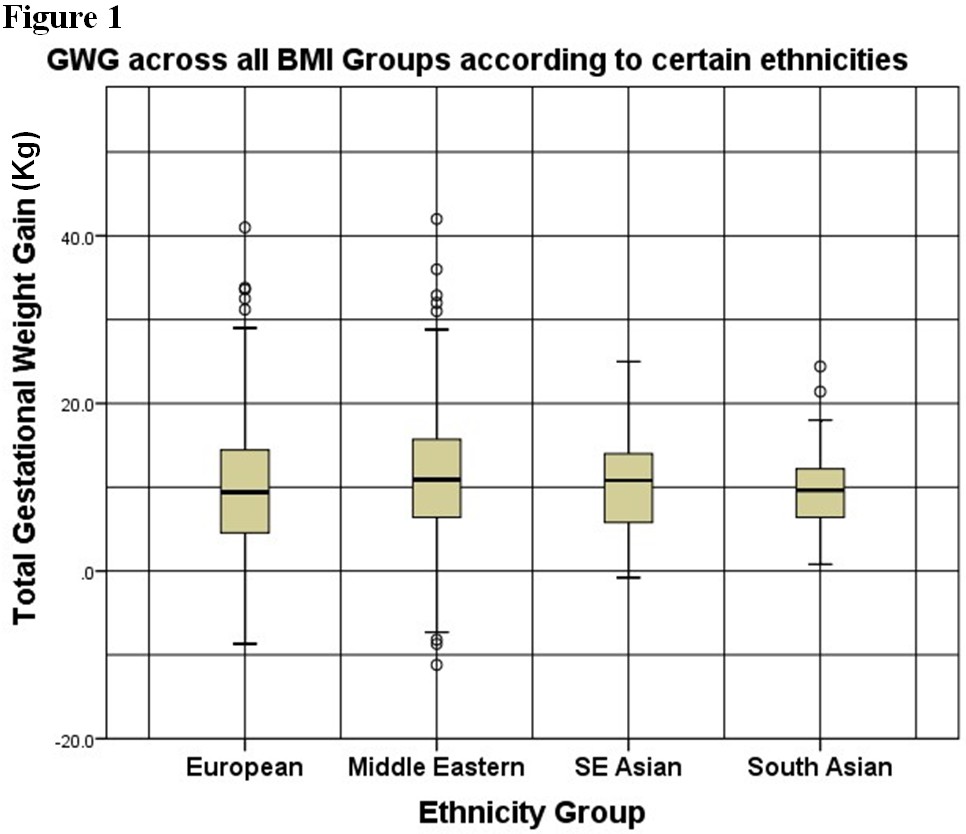Oral Presentation Australian Diabetes Society and the Australian Diabetes Educators Association Annual Scientific Meeting 2014
Ethnic differences in gestational weight gain and pregnancy outcomes in women with Gestational Diabetes Mellitus (#148)
Background: The Institute of Medicine (IOM) has produced recommended gestational weight gain (GWG) ranges according to pre-pregnancy BMI(1). The IOM states that ethnicity does not modify the association between GWG and these outcomes, and therefore advises the same weight gain ranges for all racial groups.
Aim: To compare the median and interquartile range of GWG in women from four ethnic backgrounds.
Methods: We compared de-identified prospectively collected data, (1993-2013), from women diagnosed by ADIPS(1998) criteria(2), in those with complete data including: ethnicity, pre-pregnancy BMI (using self-reported weight), last clinic weight recorded <4 weeks pre-delivery, treatment modality and birth outcomes, plus 6-8 week post-partum Glucose Tolerance Test (oGTT) data (where available). Birthweights were categorized SGA(<10th percentile) and LGA(>90th percentile) using the website www.gestation.net(3). We compared GWG in the four largest ethnic groups (94.7% of our cohort): European, Middle Eastern, South-East(SE) Asian and South Asian using box-plots. We calculated relative risk (RR) and associated 95% confidence intervals (95%CI) for outcomes.
Results: There were 3077 records in the 4 ethnic groups: European (n=720); Middle Eastern (n=884); South-East (SE) Asian (n=1117); South Asian (n=356), with post-partum oGTT data available for 1855(60.3%). Figure 1 shows the median and interquartile ranges for GWG in each ethnic group. Table 1 shows the Relative Risk of outcomes between ethnic groups using the European group as the reference.


Conclusions: Weight gain appears to be similar between ethnic groups. However pregnancy outcomes differ significantly by ethnicity. Therefore the differences in pregnancy outcomes between ethnic groups do not appear to be due to differences in gestational weight gain. Further research is needed to determine whether maternal weight gain recommendations for women with GDM should differ by ethnicity.
Acknowledgements:
We wish to thank all of the Diabetes Educators who have collected data and maintained the database and Professor Jason Gardosi for permission to use his bulk centile calculator.
- Institute of Medicine and National Research Council. Weight Gain During Pregnancy: Reexamining the Guidelines. Washington DC: The National Academies Press, 2009.
- Hoffman L, Nolan C, Wilson JD, Oats JJN, Simmons D. Gestational diabetes mellitus – management guidelines. The Australasian Diabetes in Pregnancy Society. Med J Aust 1998; 169:93–97.
- Gardosi J, Francis A. Customised Weight Centile Calculator – GROW-Centile v5.15/6.4 2009. Gestation Network, www.gestation.net (v5.15: individual; v6.4: bulk centiles).